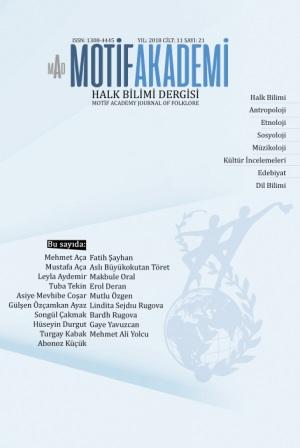İKİTELLİ CURA (RUZBA) İCRASI, AKTARIMI VE ÂŞIK NESİMİ ÇİMEN’İN BU BAĞLAMDAKİ YERİ VE ÖNEMİ
PERFORMANCE, TRANSMISSION OF TWO-STRING CURA (RUZBA) AND THE PLACE AND IMPORTANCE OF ÂŞIK NESİMİ ÇİMEN IN THIS CONTEXT
Author(s): Makbule ORAL, Erol DERANSubject(s): Cultural history, Music, History of Art
Published by: Motif Halk Oyunları Eğitim ve Öğretim Vakfı
Keywords: Two-string Cura; Nesimi’s instrument; Ruzba Tune; Şelpe (Tapping) Technique; Alevi Music;
Summary/Abstract: In this study, structural characteristics and mode of performance of the long standing instrument which is mostly called two-string bağlama, two-string cura today and also known as ırızva and ruzba will be discussed. It is also aimed to emphasize the important role of the instrument in the transmission and conservation of a culture. For this, the role of Âşık Nesimi Çimen, one of the most important and recent links in the process of bringing thetwo-string bağlama/cura to the present beyond the centuries has been emphasized. In the study, literature review and structured interview methods were used to collect data. In the study, it is seen that the ‘‘two-string’‘ instrument encountered in a poem of Kaygusuz Abdal inthe 14th century has been used in the Alevi belief and culture since then and is an important part of it. Two-string bağlama/cura which is performed with a unique tuning and playing technique is a dual sound instrument consisting of two rows of string and played with tapping (clawing) technique.
Journal: Motif Akademi Halkbilimi Dergisi
- Issue Year: 11/2018
- Issue No: 21
- Page Range: 53-68
- Page Count: 16
- Language: Turkish

